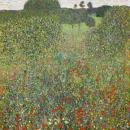Sono una creatura
Traduzione giapponese di nyamo su Lyrics Translate

子供
(Continues)
(Continues)
Contributed by Luke Atreides 2025/5/11 - 12:31
Bella Ciao
Anonymous

GIAPPONESE / JAPANESE 6
Traduzione giapponese della "versione al femminile di Alba", di nyamo su Lyrics Translate.
Japanese translation of the "The "Feminine Bella Ciao" from Alba" by nyamo su Lyrics Translate.
Traduzione giapponese della "versione al femminile di Alba", di nyamo su Lyrics Translate.
Japanese translation of the "The "Feminine Bella Ciao" from Alba" by nyamo su Lyrics Translate.
ある朝 僕は目覚めた
(Continues)
(Continues)
Contributed by Luke Atreides 2025/5/3 - 15:56
Bella Ciao
Anonymous
GIAPPONESE / JAPANESE 5
Traduzione Giapponese dall'album 45 giri: Yves Montand – Bella Ciao / Angelina
Japanese translation from the 7" Album: Yves Montand – Bella Ciao / Angelina
Traduzione Giapponese dall'album 45 giri: Yves Montand – Bella Ciao / Angelina
Japanese translation from the 7" Album: Yves Montand – Bella Ciao / Angelina
Contributed by Dq82 2025/4/30 - 16:54
原爆許すまじ [No More Atomic Bombs]
![原爆許すまじ [No More Atomic Bombs]](img/thumb/c934_130x140.jpeg?1328309174)
romaji lyrics for anyone who wants to sing along
furusato no machi yakare
(Continues)
(Continues)
Contributed by Zephyr 2025/4/30 - 02:55
戦友 / Sen'yū
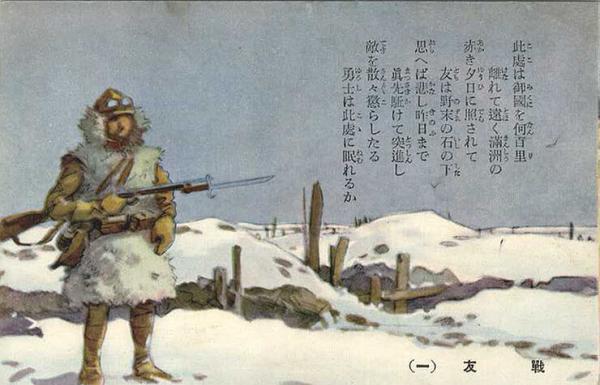
[1905]
Sen'yū
歌詞 [Kashi] / Testo / Lyrics / Paroles / Sanat :
Mashita Hisen [真下飛泉]
音楽 [Ongaku] / Musica / Music / Musique / Sävel:
Miyoshi Waki [三善和気]
La canzone fu composta durante il conflitto russo-giapponese del 1905. E’ una canzone che prende le distanze dalla guerra, con discrezione. Non c’è nessun compiacimento per essa. La canzone conobbe un discreto revival in Giappone dopo l’incidente di Mukden, in Cina, avvenuto il 18 Settembre 1931.
Andando a ritroso, secondo il trattato di Portsmouth del 1905 che sancì la pace tra Russia e Giappone, il Giappone ottenne in affitto la Ferrovia della Manciuria meridionale. Tuttavia le mire del Sol Levante sull’Estremo Oriente non si fermarono dato che il Giappone reclamò il pieno controllo del territorio con l’acquisizione di tutti i diritti che la Russia aveva ottenuto dalla Cina alla fine del XIX secolo. Neanche questo bastò ai Giapponesi... (Continues)
Sen'yū
歌詞 [Kashi] / Testo / Lyrics / Paroles / Sanat :
Mashita Hisen [真下飛泉]
音楽 [Ongaku] / Musica / Music / Musique / Sävel:
Miyoshi Waki [三善和気]
La canzone fu composta durante il conflitto russo-giapponese del 1905. E’ una canzone che prende le distanze dalla guerra, con discrezione. Non c’è nessun compiacimento per essa. La canzone conobbe un discreto revival in Giappone dopo l’incidente di Mukden, in Cina, avvenuto il 18 Settembre 1931.
Andando a ritroso, secondo il trattato di Portsmouth del 1905 che sancì la pace tra Russia e Giappone, il Giappone ottenne in affitto la Ferrovia della Manciuria meridionale. Tuttavia le mire del Sol Levante sull’Estremo Oriente non si fermarono dato che il Giappone reclamò il pieno controllo del territorio con l’acquisizione di tutti i diritti che la Russia aveva ottenuto dalla Cina alla fine del XIX secolo. Neanche questo bastò ai Giapponesi... (Continues)
ここは御国を何百里 [1]
(Continues)
(Continues)
Contributed by Riccardo Gullotta 2025/3/5 - 23:47
Requiem

--> Blog akkiiakiie.exblog.jp
レクイエム (Continues)
Contributed by Riccardo Venturi 2025/2/23 - 18:28
Warszawianka 1905 roku [Варшавянка; La Varsovienne; ¡A las barricadas!]
![Warszawianka 1905 roku [Варшавянка; La Varsovienne; ¡A las barricadas!]](img/thumb/c6506_130x140.jpeg?1328189496)
3η. こくみんの歌 (Kokumin no uta) - 本山貴春( Motoyama Takaharu), 2024
3η. こくみんの歌 (Kokumin no uta) - 本山貴春 (Motoyama Takaharu), 2024
Title:
Artist: 本山貴春( Motoyama Takaharu)
Release:October 22, 2024
A public relations agent for a politician in the Democratic Party For the People(国民民主党), a centrist political party in Japan.
A song composed for the “100 Million Project,” which aims for 100 million views of party-related videos and 100 million yen in donations in the 2024 general election in Japan.- こくみんの歌
3η. こくみんの歌 (Kokumin no uta) - 本山貴春 (Motoyama Takaharu), 2024
Title:
Artist: 本山貴春( Motoyama Takaharu)
Release:October 22, 2024
A public relations agent for a politician in the Democratic Party For the People(国民民主党), a centrist political party in Japan.
A song composed for the “100 Million Project,” which aims for 100 million views of party-related videos and 100 million yen in donations in the 2024 general election in Japan.- こくみんの歌
こくみんの歌
(Continues)
(Continues)
Contributed by Yu_Okinota (Albatross795) 2024/10/29 - 14:32
がんばろう [Ganbarō]
![がんばろう [Ganbarō]](img/upl/miikewomen.jpg)
[1960]
Lyrics / Testo / Paroles / Sanat: Yaeko Morita 森田八重子 1927-2004
Music / Musica / Musique / Sävel: Sakae Araki 荒木栄 1924-1962
The Miike struggle (1960)
Read complete article on en.wikipedia
The Miike Struggle (三池闘争 三池闘争, Miike tōsō) was a year-long struggle in Japan in 1960 between the organized labor movement, backed by a variety of left wing groups, and big business organizations, backed by the Japanese right, centering around a lengthy labor dispute at the Mitsui Miike Coal Mine on the west coast of Kyushu in southern Japan. Occurring at the climax of a long series of escalating strikes and other militant labor actions in 1950s Japan, the Miike Struggle was the largest labor-management dispute in Japanese history.[1] Ultimately, the labor movement in Japan was defeated at Miike, dealing a significant blow to its prospects going forward. […]
The Miike Coal Mine in northern Kyushu... (Continues)
Lyrics / Testo / Paroles / Sanat: Yaeko Morita 森田八重子 1927-2004
Music / Musica / Musique / Sävel: Sakae Araki 荒木栄 1924-1962
The Miike struggle (1960)
Read complete article on en.wikipedia
The Miike Struggle (三池闘争 三池闘争, Miike tōsō) was a year-long struggle in Japan in 1960 between the organized labor movement, backed by a variety of left wing groups, and big business organizations, backed by the Japanese right, centering around a lengthy labor dispute at the Mitsui Miike Coal Mine on the west coast of Kyushu in southern Japan. Occurring at the climax of a long series of escalating strikes and other militant labor actions in 1950s Japan, the Miike Struggle was the largest labor-management dispute in Japanese history.[1] Ultimately, the labor movement in Japan was defeated at Miike, dealing a significant blow to its prospects going forward. […]
The Miike Coal Mine in northern Kyushu... (Continues)
がんばろう 突き上げる空に [1] [2]
(Continues)
(Continues)
Contributed by Riccardo Venturi-san 2024/10/4 - 22:02
Song Itineraries:
The War of Labour: Emigration, Immigration, Exploitation, Slavery
長崎の鐘
Nagasaki no kane
composed by Yuji Koseki / 古関 裕而
Takashi Nagai era un radiologo giapponese che sopravvisse alla bomba atomica di Nagasaki. Ma anche di più: era un cristiano convertito. Battezzato Takashi Paolo Nagai, in memoria di Paolo Miki e i tredici martiri crocifissi a Urakami, fu proprio conoscendo i discendenti di questi "kakure kirishitan" (i cristiani nascosti) che Takashi si avvicinò alla fede; e conobbe sua moglie Midori.
Quando la bomba cadde, l'80% di medici e pazienti dell'ospedale di Nagasaki morì sul colpo; Takashi fu risparmiato dalle pareti schermate in cemento armato del reparto di radiologia. Nel suo libro autobiografico e bestseller "Le campane di Nagasaki", la prima testimonianza diretta di quanto accaduto in Giappone, Takashi racconta che nessuno sapeva cosa fosse accaduto, pareva di essere dentro un incubo. Solo lui e i suoi colleghi di radiologia seppero presto... (Continues)
composed by Yuji Koseki / 古関 裕而
Takashi Nagai era un radiologo giapponese che sopravvisse alla bomba atomica di Nagasaki. Ma anche di più: era un cristiano convertito. Battezzato Takashi Paolo Nagai, in memoria di Paolo Miki e i tredici martiri crocifissi a Urakami, fu proprio conoscendo i discendenti di questi "kakure kirishitan" (i cristiani nascosti) che Takashi si avvicinò alla fede; e conobbe sua moglie Midori.
Quando la bomba cadde, l'80% di medici e pazienti dell'ospedale di Nagasaki morì sul colpo; Takashi fu risparmiato dalle pareti schermate in cemento armato del reparto di radiologia. Nel suo libro autobiografico e bestseller "Le campane di Nagasaki", la prima testimonianza diretta di quanto accaduto in Giappone, Takashi racconta che nessuno sapeva cosa fosse accaduto, pareva di essere dentro un incubo. Solo lui e i suoi colleghi di radiologia seppero presto... (Continues)
こよなく晴れた 青空を*
(Continues)
(Continues)
Contributed by Dq82 2023/8/15 - 10:54
Song Itineraries:
Hiroshima and Nagasaki 広島市 - 長崎市
Come Out Ye Black And Tans

The famous Irish protest song "Come out ye, Black and Tans" has an original song; "Rosc Catha na Mumhan", which means "The Battlecry of Munster". The song originated as an Irish patriotic song written by the poet Piaras Mac Gearailt (1709-1792) during the former Seven Years' War. The song subsequently became popular among the Irish and was also crooned by the IRA.
I have written lyrics to this proud Irish masterpiece so that it can be sung in Japanese, and I wish Antiwarsong.org every success in its endeavours, so I contribute here.
La famosa canzone di protesta irlandese "Come out ye, Black and Tans" ha una canzone originale; "Rosc Catha na Mumhan", che significa "Il grido di battaglia di Munster". La canzone è nata come una canzone patriottica irlandese scritta dal poeta Piaras Mac Gearailt (1709-1792) durante l'ex Guerra dei Sette Anni. La canzone in seguito divenne popolare tra gli irlandesi... (Continues)
I have written lyrics to this proud Irish masterpiece so that it can be sung in Japanese, and I wish Antiwarsong.org every success in its endeavours, so I contribute here.
La famosa canzone di protesta irlandese "Come out ye, Black and Tans" ha una canzone originale; "Rosc Catha na Mumhan", che significa "Il grido di battaglia di Munster". La canzone è nata come una canzone patriottica irlandese scritta dal poeta Piaras Mac Gearailt (1709-1792) durante l'ex Guerra dei Sette Anni. La canzone in seguito divenne popolare tra gli irlandesi... (Continues)
マンスターの慟哭
(Continues)
(Continues)
Contributed by Boreč 2022/9/27 - 02:19
Άσπρη είναι (Για την αποκατάσταση του μαύρου)

Lyrics: Katerina Gogou
Music: Kostas Athiridis
First performance: Lolek
Interpretation: Georgia Velivasaki / Kostas Athiridis
Album: Pano Kato i Patision (2012)
作詞:カテリーナ・ゴゴウ
音楽:コスタス・アティリディス
初演:ロレック
訳:ジョージア・ヴェリバサキ/コスタス・アティリディス
アルバム:Pano Kato i Patision (2012)
Music: Kostas Athiridis
First performance: Lolek
Interpretation: Georgia Velivasaki / Kostas Athiridis
Album: Pano Kato i Patision (2012)
作詞:カテリーナ・ゴゴウ
音楽:コスタス・アティリディス
初演:ロレック
訳:ジョージア・ヴェリバサキ/コスタス・アティリディス
アルバム:Pano Kato i Patision (2012)
"Ho tradotto questa poesia greca anche in giapponese. Sembra un po' come una traduzione letterale, ma spero che questo sarà di qualche servizio."
白
(Continues)
(Continues)
Contributed by Boreč 2022/9/22 - 08:50
ヒロシマというとき [Cello Concerto No.1]
![ヒロシマというとき [Cello Concerto No.1]](img/upl/07-bamboo-thicket.jpg)
Hiroshima to iu toki
[1976]
詩 / Wiersz / Poesia / A Poem by / Poème / Runo:
Kurihara Sadako[ 栗原 貞子]
音楽 / Muzyka / Musica / Music / Musique / Sävel
Krzysztof Penderecki
6 Agosto 1945: Hiroshima
Seguono 14 dipinti degli artisti giapponesi Iri Maruki e di sua moglie Toshiko Akamatsu. Si trovano alla Galleria Maruki a Higashi Matsuyama, 50 km a nordovest di Tokio. Iri arrivò a Hiroshima dove si trovava la sua famiglia il 9 Agosto 1945, sua moglie pochi giorni dopo. Rimasero lì per un mese a seppellire i morti e aiutare i sopravvissuti. Toshi soffrì di radiazioni sino alla sua morte, nel 2000. Durante la loro permanenza a Hiroshima raccolsero le testimonianze dei sopravvissuti, sfidando la legge imposta dai vincitori che proibiva la raccolta di informazioni sul bombardamento e sui suoi effetti. Le restrizioni rimasero in vigore sino al 1952, anno in cui entrò in vigore il trattato di pace... (Continues)
[1976]
詩 / Wiersz / Poesia / A Poem by / Poème / Runo:
Kurihara Sadako[ 栗原 貞子]
音楽 / Muzyka / Musica / Music / Musique / Sävel
Krzysztof Penderecki
6 Agosto 1945: Hiroshima
Seguono 14 dipinti degli artisti giapponesi Iri Maruki e di sua moglie Toshiko Akamatsu. Si trovano alla Galleria Maruki a Higashi Matsuyama, 50 km a nordovest di Tokio. Iri arrivò a Hiroshima dove si trovava la sua famiglia il 9 Agosto 1945, sua moglie pochi giorni dopo. Rimasero lì per un mese a seppellire i morti e aiutare i sopravvissuti. Toshi soffrì di radiazioni sino alla sua morte, nel 2000. Durante la loro permanenza a Hiroshima raccolsero le testimonianze dei sopravvissuti, sfidando la legge imposta dai vincitori che proibiva la raccolta di informazioni sul bombardamento e sui suoi effetti. Le restrizioni rimasero in vigore sino al 1952, anno in cui entrò in vigore il trattato di pace... (Continues)
ヒロシマというとき [1]
(Continues)
(Continues)
Contributed by Riccardo Gullotta 2022/8/8 - 18:31
Song Itineraries:
Hiroshima and Nagasaki 広島市 - 長崎市
По долинам и по взгорьям

野こえ丘をこえて [No koe oka o koete]
Versione giapponese / Japanese version / Version japanaise / Japaninkielinen versio:
Akiko Seki [関 鑑子] [?]
The Japan Central Choir (JCC), a Communist party-led choir that once existed in Japan, performs "По долинам и по взгорьям". The lyricist is unknown, but it is assumed to have been written by the choir's leader, Akiko Seki (関 鑑子). [Boreč]
Versione giapponese / Japanese version / Version japanaise / Japaninkielinen versio:
Akiko Seki [関 鑑子] [?]
The Japan Central Choir (JCC), a Communist party-led choir that once existed in Japan, performs "По долинам и по взгорьям". The lyricist is unknown, but it is assumed to have been written by the choir's leader, Akiko Seki (関 鑑子). [Boreč]
1
(Continues)
(Continues)
Contributed by Boreč 2022/5/18 - 12:10
Warszawianka 1905 roku [Варшавянка; La Varsovienne; ¡A las barricadas!]
![Warszawianka 1905 roku [Варшавянка; La Varsovienne; ¡A las barricadas!]](img/upl/borec.jpg)
1j1. Warushawa-Rōdōka: La Warszawianka in giapponese di Kaji Wataru [鹿地 亘, 1927] completata da Boreč [2022]
1j1. Warushawa-Rōdōka: the Japanese Warszawianka by Kaji Wataru [鹿地 亘, 1927] completed by Boreč [2022]
The Japanese version of "Warszawianka 1905 roku" was first written in 1927 by the novelist Kaji Wataru (鹿地 亘). His translation is a brave piece of work with a military flavour, and has been sung by many leftists to this day. Unfortunately, only the first verse has been written in Japan, so today I have tried to write singable lyrics for the second and third verses, based on the lyrics of the Krzhizhanovsky and Georgian versions, thus I contribute here in the hope that this thread and anti-war songs will continue to grow. [Boreč]
La versione giapponese della “Warszawianka 1905 roku” è stata scritta nel 1927 dal romanziere Kaji Wataru (鹿地 亘). La sua traduzione è un'opera valente e... (Continues)
1j1. Warushawa-Rōdōka: the Japanese Warszawianka by Kaji Wataru [鹿地 亘, 1927] completed by Boreč [2022]
The Japanese version of "Warszawianka 1905 roku" was first written in 1927 by the novelist Kaji Wataru (鹿地 亘). His translation is a brave piece of work with a military flavour, and has been sung by many leftists to this day. Unfortunately, only the first verse has been written in Japan, so today I have tried to write singable lyrics for the second and third verses, based on the lyrics of the Krzhizhanovsky and Georgian versions, thus I contribute here in the hope that this thread and anti-war songs will continue to grow. [Boreč]
La versione giapponese della “Warszawianka 1905 roku” è stata scritta nel 1927 dal romanziere Kaji Wataru (鹿地 亘). La sua traduzione è un'opera valente e... (Continues)
ワルシャワ労働歌 (Warushawa-Rōdōka)
(Continues)
(Continues)
Contributed by Boreč 2022/5/18 - 03:13
Bella Ciao
Anonymous

GIAPPONESE / JAPANESE 4
La Bella Ciao in giapponese de Tiki Tiki Bamboooos
Bella Ciao in Japanese by Tiki Tiki Bamboooos
Bella ciao surf. Le Tiki Tiki Bamboooos sono un trio, suonano la musica di Jawaii, un’isola immaginaria, e hanno scritto un disco che parla di posti segreti e luoghi immaginari. La loro versione è praticamente strumentale, con un arrangiamento 60s tutto basato sulle chitarre e una parte di voce essenziale, un po’ in italiano e un po’ in giapponese. Ascoltatela e non riuscirete a smettere di dire “parucizano”.
rollingstone.it
La Bella Ciao in giapponese de Tiki Tiki Bamboooos
Bella Ciao in Japanese by Tiki Tiki Bamboooos
Bella ciao surf. Le Tiki Tiki Bamboooos sono un trio, suonano la musica di Jawaii, un’isola immaginaria, e hanno scritto un disco che parla di posti segreti e luoghi immaginari. La loro versione è praticamente strumentale, con un arrangiamento 60s tutto basato sulle chitarre e una parte di voce essenziale, un po’ in italiano e un po’ in giapponese. Ascoltatela e non riuscirete a smettere di dire “parucizano”.
rollingstone.it
Contributed by Dq82 2022/4/26 - 13:46
Священная война (или Вставай, страна огромная!)

Unfortunately, it was rarely sung in Japan.
1.
(Continues)
(Continues)
Contributed by Boreč 2022/4/25 - 00:48
雪の進軍 [Yuki no Shingun]
![雪の進軍 [Yuki no Shingun]](img/upl/Battle_of_Weihaiwei_28land29.jpg)
[1895]
"Yuki no Shingun" (Japanese: 雪の進軍, lit. 'The Snow March') is a Japanese gunka composed in 1895 by Imperial Japanese Army musician Nagai Kenshi who reflected his experience in the Battle of Weihaiwei during the First Sino-Japanese War.
The song was banned in the Imperial Japanese Army during World War II and was used in the 1977 film Mount Hakkoda.
During the Battle of Weihaiwei, the Imperial Japanese Army experienced heavy snow and low temperature, while being under-equipped with water, food and fuel.
Nagai reflected in his song the hardship Japanese soldiers experienced and their discontentment about the war.
The song, which was popular at the time of its publication and is described by scholars to have an upbeat melody, was said to be favoured by Ōyama Iwao.
It was also taught and sung in Japanese schools during the late Meiji period.
Nagai's song was later widely referred... (Continues)
"Yuki no Shingun" (Japanese: 雪の進軍, lit. 'The Snow March') is a Japanese gunka composed in 1895 by Imperial Japanese Army musician Nagai Kenshi who reflected his experience in the Battle of Weihaiwei during the First Sino-Japanese War.
The song was banned in the Imperial Japanese Army during World War II and was used in the 1977 film Mount Hakkoda.
During the Battle of Weihaiwei, the Imperial Japanese Army experienced heavy snow and low temperature, while being under-equipped with water, food and fuel.
Nagai reflected in his song the hardship Japanese soldiers experienced and their discontentment about the war.
The song, which was popular at the time of its publication and is described by scholars to have an upbeat melody, was said to be favoured by Ōyama Iwao.
It was also taught and sung in Japanese schools during the late Meiji period.
Nagai's song was later widely referred... (Continues)
雪の進軍 氷を踏んで [1]
(Continues)
(Continues)
2022/4/18 - 13:03
Warszawianka 1905 roku [Варшавянка; La Varsovienne; ¡A las barricadas!]
![Warszawianka 1905 roku [Варшавянка; La Varsovienne; ¡A las barricadas!]](img/thumb/c6506_130x140.jpeg?1328189496)
1j3. Traduzione letterale giapponese
1j2. Japanese literal translation
1j2. Japanese literal translation
From Lyricstranslate. The translator is M. Naomi
ワルシャワ労働歌
(Continues)
(Continues)
Contributed by Riccardo Venturi 2021/10/12 - 06:35
אַרבעטלאָזע מאַרש

失業者行進曲
https://www.bilibili.com/video/BV1xq4y...
cinese:歌詞改動較大,參考了Daniel Kahn,the Painted Bird的英語填詞。
https://www.bilibili.com/video/BV1xq4y...
cinese:歌詞改動較大,參考了Daniel Kahn,the Painted Bird的英語填詞。
1.
(Continues)
(Continues)
Contributed by Albatross795 2021/10/6 - 13:14
Venceremos

ベンセレモス [Benseremosu]: Versione giapponese / Japanese version / Version japonaise / Japaninkielinen versio
ベンセレモス
(Continues)
(Continues)
Contributed by Boreč 2021/10/3 - 01:09
L'Internationale

GIAPPONESE [3] / JAPANESE [3]
A third Japanese version, found in this YouTube video:
I don't have any more information, but I suspect it's an original translation from this channel. [Mandy]
I don't have any more information, but I suspect it's an original translation from this channel. [Mandy]
立ち上げれ!呪われ (た)
(Continues)
(Continues)
Contributed by Mandy 2021/8/19 - 22:21
Warszawianka 1905 roku [Варшавянка; La Varsovienne; ¡A las barricadas!]
![Warszawianka 1905 roku [Варшавянка; La Varsovienne; ¡A las barricadas!]](img/thumb/c6506_130x140.jpeg?1328189496)
1j2. はるかな青空 (Haruka na Aozora)- Versione giapponese di Tamiko Hirai (1961)
1j2. はるかな青空 (Haruka na Aozora)- Japanese version by Tamiko Hirai (1961)
"This version was included in NHK's children's song project "Minna no uta", started in 1961. The title is "Haruka na Aozora" and it is a replacement of the Polish folk song "Warszawianka 1905 roku". [Borec / Akoniet]
1j2. はるかな青空 (Haruka na Aozora)- Japanese version by Tamiko Hirai (1961)
"This version was included in NHK's children's song project "Minna no uta", started in 1961. The title is "Haruka na Aozora" and it is a replacement of the Polish folk song "Warszawianka 1905 roku". [Borec / Akoniet]
はるかな青空 (Haruka na Aozora)
(Continues)
(Continues)
Contributed by Boreč (T ^ T) 2021/8/13 - 15:02
Гимн Международного Союза Студентов

国際学連の歌 / 国際学生連盟の歌
(Continues)
(Continues)
Contributed by Борец(╹◡╹) 2021/7/9 - 02:57
Die Moorsoldaten [Börgermoorlied; Das Moorlied]
![Die Moorsoldaten [Börgermoorlied; Das Moorlied]](img/thumb/c971_130x140.jpeg?1328359947)
1.
(Continues)
(Continues)
Contributed by Albatross795 2021/7/7 - 12:15
S’i’ fosse foco

tumblr e su Lyrics Translate
もし私が火なら
(Continues)
(Continues)
Contributed by Luke Atreides 2021/7/4 - 17:22
Bella Ciao
Anonymous
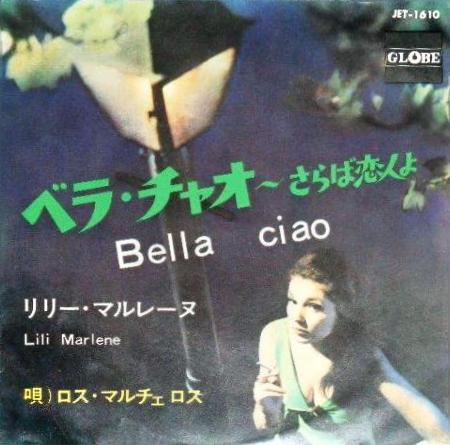
GIAPPONESE / JAPANESE 3
La Bella Ciao in giapponese de Los Marcellos Ferial
Bella Ciao in Japanese by Los Marcellos Ferial
Nel 1966 la casa discografica Sony Music Entertainment Italy pubblicò questa Bella Ciao cantata in giapponese da Marcello Minerbi e Los Marcellos Ferial (qui “Marcello's”); altro non ci è dato di sapere, compreso il testo della canzone (a parte quando Los Marcellos Ferial dicono “O bella mia, bella ciao” in italiano). Come si vede dalla copertina dell'album con tutta probabilità si tratta di una versione della "Bella ciao romantica" degli stessi Marcellos Ferial. Se qualcuno è in grado di trascrivere il testo giapponese, gliene saremmo estremamente grati.
In 1966, Sony Music Entertainment Italy released this Bella Ciao sung in Japanese by Marcello Minerbi and Los Marcellos Ferial (here “Marcello's”); we don't know anything else about this version, including... (Continues)
La Bella Ciao in giapponese de Los Marcellos Ferial
Bella Ciao in Japanese by Los Marcellos Ferial
Nel 1966 la casa discografica Sony Music Entertainment Italy pubblicò questa Bella Ciao cantata in giapponese da Marcello Minerbi e Los Marcellos Ferial (qui “Marcello's”); altro non ci è dato di sapere, compreso il testo della canzone (a parte quando Los Marcellos Ferial dicono “O bella mia, bella ciao” in italiano). Come si vede dalla copertina dell'album con tutta probabilità si tratta di una versione della "Bella ciao romantica" degli stessi Marcellos Ferial. Se qualcuno è in grado di trascrivere il testo giapponese, gliene saremmo estremamente grati.
In 1966, Sony Music Entertainment Italy released this Bella Ciao sung in Japanese by Marcello Minerbi and Los Marcellos Ferial (here “Marcello's”); we don't know anything else about this version, including... (Continues)
L'Anonimo Toscano del XXI secolo 2021/3/5 - 09:54
Geordie, or My Geordie Will Be Hanged In A Golden Chain
Anonymous

Deacon (L. Trans.)
ジョーディ [1]
(Continues)
(Continues)
Contributed by Riccardo Venturi 2021/1/24 - 10:30
We Shall Overcome

M Naomi (L. Trans.)
勝利をわれらに
(Continues)
(Continues)
Contributed by Riccardo Venturi 2021/1/22 - 14:12
Der Himmel über Berlin [Lied vom Kindsein]
![Der Himmel über Berlin [Lied vom Kindsein]](img/upl/Kinde_13-_Himmel_uber_Berlin.jpg)
子供は子供だった頃
(Continues)
(Continues)
Contributed by Riccardo Gullotta 2020/6/5 - 11:54
Τα Τζιτζίκια

日本語訳 / Traduzione giapponese / Japanese translation / Traduction japonaise / Japaninkielinen käännös: M Naomi
セミたち
(Continues)
(Continues)
Contributed by Riccardo Gullotta 2020/5/3 - 23:07
Filament

[2012]
歌詞 / Testo / Lyrics / Paroles / Sanat :
Yui
音楽 / Musica / Music / Musique / Sävel:
橘尭葉 / Takaha Tachibana
によって演奏された / Interpreti / Performed by / Interprétée par / Laulavat :
妖精帝國 / Yōsei Taikoku / Fairy Empire
CD: Filament
免責条項 / Disclaimer / Disconoscimento
この作品はフィクションではなく、実在の人物に関係しています
This work is not about fiction, but about real people
Ogni riferimento non è puramente casuale.
歌詞 / Testo / Lyrics / Paroles / Sanat :
Yui
音楽 / Musica / Music / Musique / Sävel:
橘尭葉 / Takaha Tachibana
によって演奏された / Interpreti / Performed by / Interprétée par / Laulavat :
妖精帝國 / Yōsei Taikoku / Fairy Empire
CD: Filament
免責条項 / Disclaimer / Disconoscimento
この作品はフィクションではなく、実在の人物に関係しています
This work is not about fiction, but about real people
Ogni riferimento non è puramente casuale.
あとどれくらい失えば 高鳴る鼓動許される? [1]
(Continues)
(Continues)
Contributed by Riccardo Gullotta 2020/3/21 - 20:33
Song Itineraries:
2020-2023: COVID-19 Songbook
シンフォニーの5広島 - Symphony no 5 Hiroshima
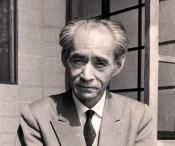
[1953]
Symphony no 5 Hiroshima
Musica /音楽/ Music / Musique / Musik / музыка /מוזיקה موسيقى/ מוזיקה / Μουσική / Sävel / Muziko:
大木正夫 - Masao Ohki
Oggi 74 anni fa
Introduzione alla Sinfonia n. 5 Hiroshima
Consiste di un Preludio e degli 8 movimenti seguenti:
I. Fantasmi - Era una processione di fantasmi. [幽霊, Yūrei]
II. Fuoco - Nel momento successivo il fuoco si propagò in fiamme. [火, Hi]
III. Acqua - La gente vagava in cerca d'acqua. [水, Mizu]
IV. Arcobaleno - Improvvisamente una pioggia nera si riversò su di loro e poi apparve un arcobaleno bellissimo. [虹, Niji]
V. Ragazzi e ragazze - I ragazzi e le ragazze sono morti senza potere conoscere la gioia della vita umana e chiamare i loro genitori. [少年少女, Shōnen shōjo]
VI. Deserto atomico [原子野, Genshi-no]
VII. Deserto sconfinato con teschi.
VIII. Elegy
I primi 6 movimenti corrispondono ai pannelli omologhi dipinti sino... (Continues)
Symphony no 5 Hiroshima
Musica /音楽/ Music / Musique / Musik / музыка /מוזיקה موسيقى/ מוזיקה / Μουσική / Sävel / Muziko:
大木正夫 - Masao Ohki
Oggi 74 anni fa
Introduzione alla Sinfonia n. 5 Hiroshima
Consiste di un Preludio e degli 8 movimenti seguenti:
I. Fantasmi - Era una processione di fantasmi. [幽霊, Yūrei]
II. Fuoco - Nel momento successivo il fuoco si propagò in fiamme. [火, Hi]
III. Acqua - La gente vagava in cerca d'acqua. [水, Mizu]
IV. Arcobaleno - Improvvisamente una pioggia nera si riversò su di loro e poi apparve un arcobaleno bellissimo. [虹, Niji]
V. Ragazzi e ragazze - I ragazzi e le ragazze sono morti senza potere conoscere la gioia della vita umana e chiamare i loro genitori. [少年少女, Shōnen shōjo]
VI. Deserto atomico [原子野, Genshi-no]
VII. Deserto sconfinato con teschi.
VIII. Elegy
I primi 6 movimenti corrispondono ai pannelli omologhi dipinti sino... (Continues)
brano strumentale
Contributed by Riccardo Gullotta 2019/8/6 - 19:31
Radio-Activity [No Nukes 2012 Version, Tokyo, Japan]
[2012; orig. 1975]
Music / Musica / Musique / Sävel:
Ralf Hütter / Florian Schneider
Japanese Lyrics / Testo giapponese / Paroles japonaises / Japaninkieliset sanat: Ryuichi Sakamoto
Il 7 e 8 luglio 2012, un enorme due giorni di musica rock chiamata No Nukes 2012 si tenne al Makuhari Messe Convention di Chiba, presso Tokyo, organizzata da Ryuichi Sakamoto, membro del gruppo technopop giapponese Yellow Magic Orchestra (YMO), nonché compositore e vincitore di un premio Oscar. I profitti del concerto furono donati al Sayonara Genpatsu 1000 Man Nin Akushon (“Comitato dei Cittadini per la petizione da 10 milioni di firme per dire addio alle centrali nucleari”), un gruppo antinuclearista sostenuto da Sakamoto, dal premio Nobel per la letteratura (1994) Kenzaburō Ōe e da altri. Non era né un luogo, né un'occasione a caso: solo l'anno prima, il Giappone era stato colpito dalla catastrofe nucleare... (Continues)
Music / Musica / Musique / Sävel:
Ralf Hütter / Florian Schneider
Japanese Lyrics / Testo giapponese / Paroles japonaises / Japaninkieliset sanat: Ryuichi Sakamoto
Il 7 e 8 luglio 2012, un enorme due giorni di musica rock chiamata No Nukes 2012 si tenne al Makuhari Messe Convention di Chiba, presso Tokyo, organizzata da Ryuichi Sakamoto, membro del gruppo technopop giapponese Yellow Magic Orchestra (YMO), nonché compositore e vincitore di un premio Oscar. I profitti del concerto furono donati al Sayonara Genpatsu 1000 Man Nin Akushon (“Comitato dei Cittadini per la petizione da 10 milioni di firme per dire addio alle centrali nucleari”), un gruppo antinuclearista sostenuto da Sakamoto, dal premio Nobel per la letteratura (1994) Kenzaburō Ōe e da altri. Non era né un luogo, né un'occasione a caso: solo l'anno prima, il Giappone era stato colpito dalla catastrofe nucleare... (Continues)
チェルノビイリ ハリスバーグ セラフィールド ヒロシマ [1]
(Continues)
(Continues)
Contributed by Rikarutu Wenuturi-san 2019/1/10 - 18:01
Song Itineraries:
No Nukes
Modlitba pro Martu

マルタの祈り
(Continues)
(Continues)
Contributed by リカルドベンチュリさん (Rikarudo Benchuri-san) 2018/8/23 - 08:54
El pueblo unido jamás será vencido

(Da questa pagina)
A (partial) translation in Japanese (from this page)
A (partial) translation in Japanese (from this page)
不屈の民(¡El pueblo unido, jamás será vencido!、団結した人民は決して敗れない!)とはチリのヌエバ・カンシオンの曲の中で、最も国際的に良く知られた歌である。この曲はセルヒオ・オルテガによって作曲され、キラパジュンによって作詞された。1973年6月に作曲され、録音された。この曲は第一に人民連合政府の歌として作曲され、サルバドール・アジェンデを支持する労働者階級の大衆運動の魂を反映している。この曲はセルヒオ・オルテガとキラパジュンによって作曲され、演奏された直後から、多くの音楽グループによって訳され、録音されている。しかしながら、特に1973年のチリ・クーデターの後、インティ・イリマニによってこの歌は国際的に有名になった。
その後、この歌は直接チリ・クーデターやラテンアメリカとは繋がりがなくとも、世界の様々な抵抗運動で用いられた。歌詞は多くの言語に翻案、翻訳されている。- ja.wikipedia
1973年9月、ピノチェトの率いるチリの軍部は、CIAやITTに後押しされて、クーデターでアジェンデ人民連合戦線政府を倒した。その際、サンティアゴ市国立競技場に狩り集められた政治犯たちを歌で励まそうとしたビクトル・ハラは、二度とギターを弾けないように両手首を折られ、顔を切りさいなまれたうえで銃殺された。
ビクトル・ハラは、フォルクローレをもとに闘う民衆の歌をつくり広める運動“ヌエバ・カンシオン(新しい歌)”の中心的歌い手だった。そしてこの歌は、一時期ハラが請われてリーダーとなっていた“ヌエバ・カンシオン”の代表的グループ、キラパジュンとセルヒオ・オルテガによって作詞作曲された。この歌はまた、「アジェンデと共に」という題をもつけられ、人民連合政権時代はチリの第二の国歌として機能していた。さらにクーデーター後は、アメリカ帝国主義と独裁政権に対して闘うすべてのラテン・アメリカの人々にとって、心の支えとなりつづけている。- Da questa pagina
その後、この歌は直接チリ・クーデターやラテンアメリカとは繋がりがなくとも、世界の様々な抵抗運動で用いられた。歌詞は多くの言語に翻案、翻訳されている。- ja.wikipedia
1973年9月、ピノチェトの率いるチリの軍部は、CIAやITTに後押しされて、クーデターでアジェンデ人民連合戦線政府を倒した。その際、サンティアゴ市国立競技場に狩り集められた政治犯たちを歌で励まそうとしたビクトル・ハラは、二度とギターを弾けないように両手首を折られ、顔を切りさいなまれたうえで銃殺された。
ビクトル・ハラは、フォルクローレをもとに闘う民衆の歌をつくり広める運動“ヌエバ・カンシオン(新しい歌)”の中心的歌い手だった。そしてこの歌は、一時期ハラが請われてリーダーとなっていた“ヌエバ・カンシオン”の代表的グループ、キラパジュンとセルヒオ・オルテガによって作詞作曲された。この歌はまた、「アジェンデと共に」という題をもつけられ、人民連合政権時代はチリの第二の国歌として機能していた。さらにクーデーター後は、アメリカ帝国主義と独裁政権に対して闘うすべてのラテン・アメリカの人々にとって、心の支えとなりつづけている。- Da questa pagina
不屈の民
(Continues)
Contributed by Riccardo Venturi 2018/6/29 - 00:05
I Come and Stand at Every Door

The Japanese version by Chitose Hajime (元 ちとせ) in collaboration with Ryuichi Sakamoto (坂本 龍一).
La versione di Chitose Hajime, in collaborazione con Ryuichi Sakamoto (che ha composto la musica) è un nuovo e diretto adattamento della poesia Kız Çocuğu di Nâzim Hikmet. Risale al 2005, e in giapponese si intitola Shinda Onna no Ko “Una bambina morta”. Chitose Hajime, nativa dell'isola di Amami Ōshima nell'arcipelago delle isole Amami tra Kyushu e Okinawa, è famosa per il particolare stile di canto “shima-uta”, con notevoli effetti in falsetto. Chitose Hajime (nata nel 1979) canta in stile shima-uta. La versione è stata eseguita presso il Memoriale della Pace di Hiroshima il 5 agosto 2005, all'immediata vigilia del 60° anniversario del bombardamento atomico di Hiroshima; in seguito, Chitose Hajime la ha inserita come bonus track nell'album Hanadairo del 2006. Da notare che il video della canzone... (Continues)
La versione di Chitose Hajime, in collaborazione con Ryuichi Sakamoto (che ha composto la musica) è un nuovo e diretto adattamento della poesia Kız Çocuğu di Nâzim Hikmet. Risale al 2005, e in giapponese si intitola Shinda Onna no Ko “Una bambina morta”. Chitose Hajime, nativa dell'isola di Amami Ōshima nell'arcipelago delle isole Amami tra Kyushu e Okinawa, è famosa per il particolare stile di canto “shima-uta”, con notevoli effetti in falsetto. Chitose Hajime (nata nel 1979) canta in stile shima-uta. La versione è stata eseguita presso il Memoriale della Pace di Hiroshima il 5 agosto 2005, all'immediata vigilia del 60° anniversario del bombardamento atomico di Hiroshima; in seguito, Chitose Hajime la ha inserita come bonus track nell'album Hanadairo del 2006. Da notare che il video della canzone... (Continues)
死んだ女の子 [1]
(Continues)
(Continues)
Contributed by Wenuturi Rikarutu-san / ウェヌトゥリリカルトルさん 2017/12/1 - 07:11
נרקוד לשלום

26. GIAPPONESE / Japanese
Yuko Kimura
NOTA.E' stata aggiunta una trascrizione ottenuta mediante Google Translator (notoriamente esattissimo e affidabile per le trascrizioni).
NOTE. A transcription has been added by help of Google Translator (notoriously very exact and reliable for transcriptions).
Yuko Kimura
NOTA.E' stata aggiunta una trascrizione ottenuta mediante Google Translator (notoriamente esattissimo e affidabile per le trascrizioni).
NOTE. A transcription has been added by help of Google Translator (notoriously very exact and reliable for transcriptions).
平和のために踊り [1]
(Continues)
(Continues)
Contributed by Riccardo Venturi 2017/8/26 - 08:55
Józef Wittlin: Żydom w Polsce

こんどは、ユーゼフ・ヴィトリン(Jozef Wittlin, 1896―1976)の「ポーランドのユダヤ人に」 Zydom Polskim だが、ヴィトリンは開戦と同時にフランスから合衆国に逃れ、ニューヨークのポーランド語雑誌などで評論活動を続けていた。 1944 年に、合衆国で『奈落から』が復刻 された際には序文を寄せている。そういった位置にあった.
ポーランドのユダヤ人に
(Continues)
(Continues)
Contributed by Riccardo Venturi-san 2017/3/12 - 23:16
זאָג ניט קײנמאָל

それでは、こんどは『歌は生き延びる』の「補遺」から、ヴィルニュスの「未同化ユダヤ人」、ヒルシュ・グリック(HIRSH GLIK, 1922)の詩を引いておこう。イディッシュ語で書かれたこの詩は、ロシアの軍歌(ドミートリ・ポクラス作曲)に乗せて、ヴィルニュス・ ゲットーの戦士が歌ったものが、ワルシャワをはじめ各地へと伝わり、歌い継がれた。いまでもイスラエルや各地のホロコーストを記念する催しでの人気あるレパートリーとなっている。 原題は「断じて言うな」ZOG NIT KEYN MOL。
断じて言うな
(Continues)
(Continues)
Contributed by Riccardo Venturi 2017/3/12 - 23:04
Capitan Harlock

Sigla originale by Ichiro Mizuki
Si noti come la sigla italiana sia da considerare un'opera originale completamente a sè stante, sia nel testo che nella musica
Versione originale con sottotitoli in inglese
Si noti come la sigla italiana sia da considerare un'opera originale completamente a sè stante, sia nel testo che nella musica
Versione originale con sottotitoli in inglese
宇宙の海は俺の海
(Continues)
(Continues)
Contributed by Dq82 2017/1/1 - 01:26
L'Internationale

OKINAWANO [UCHINAAGUCHI] / OKINAWAN [UCHINAAGUCHI]
La versione nella lingua okinawana (Uchinaaguchi) effettuata dal 2channel's Communist Party Board (2012)
Okinawan version by 2channel's Communist Party board (2012)
Okinawan version by 2channel's Communist Party board (2012)
でいひゃ気張らなや
(Continues)
(Continues)
2016/7/2 - 07:05
Where Have all the Flowers Gone

GIAPPONESE / JAPANESE / JAPONAIS [2]
Kenichi Tahara / Mr Children
La band J-Rock Mr Children (in anglo-giapponese Misutā Chirudoren , e conosciuta popolarmente come Misuchiru), formata nel 1988 da Kazutoshi Sakurai, Kenichi Tahara, Keisuke Nakagawa e Hideya Suzuki, è titolare di un vero e proprio fenomeno in Giappone e non solo. Hanno venduto oltre 50 milioni di dischi; negli anni '90 si è parlato nel Paese del Sol Levante di vero e proprio “fenomeno Misuchiru”. Nel 1994, al di fuori dei loro tredici album in studio, hanno pubblicato un singolo, Innocent World, che ha raggiunto la prima posizione nella classifica dei singoli mai venduti in Giappone (1.935.830 copie); la canzone è stata poi inserita nell'album Atomic Heart. Il singolo prevedeva originariamente un lato B: si trattava della versione giappponese (scritta da Kenichi Tahara) di Where Have all the Flowers gone. Il fatto è che... (Continues)
Kenichi Tahara / Mr Children
La band J-Rock Mr Children (in anglo-giapponese Misutā Chirudoren , e conosciuta popolarmente come Misuchiru), formata nel 1988 da Kazutoshi Sakurai, Kenichi Tahara, Keisuke Nakagawa e Hideya Suzuki, è titolare di un vero e proprio fenomeno in Giappone e non solo. Hanno venduto oltre 50 milioni di dischi; negli anni '90 si è parlato nel Paese del Sol Levante di vero e proprio “fenomeno Misuchiru”. Nel 1994, al di fuori dei loro tredici album in studio, hanno pubblicato un singolo, Innocent World, che ha raggiunto la prima posizione nella classifica dei singoli mai venduti in Giappone (1.935.830 copie); la canzone è stata poi inserita nell'album Atomic Heart. Il singolo prevedeva originariamente un lato B: si trattava della versione giappponese (scritta da Kenichi Tahara) di Where Have all the Flowers gone. Il fatto è che... (Continues)
花はどこへいった
(Continues)
(Continues)
Contributed by CCG/AWS Staff 2016/3/29 - 04:36
Sólo le pido a Dios

GIAPPONESE / JAPANESE / JAPONÉS
La versione giapponese di Anna Saeki, interpretata assieme a León Gieco. La traduzione giapponese è ripresa da questa pagina.
Japanese translation by Anna Saeki, performed with León Gieco. The Japanese translation is reproduced from this page.
Japanese translation by Anna Saeki, performed with León Gieco. The Japanese translation is reproduced from this page.
ただ、神に祈ること
(Continues)
(Continues)
Contributed by Riccardo Venturi 2016/1/31 - 04:45
Angry Flames

Quello che credo essere il testo della poesia originale di Sankichi Tōge, da ja.wikisource
原文
(Continues)
(Continues)
Contributed by Bernart Bartleby 2016/1/21 - 12:58
ダッ!ダッ!脱・原発の歌
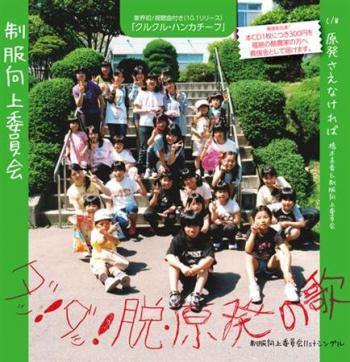
Da~tsu! Da~tsu! Datsu genpatsu no uta
[2011]
Autore: Seifuku Kojo Iinkai (SKI, School Uniform Improvement Committee) o una delle sue componenti.
Sul lato B di questo singolo si trova 原発さえなければ / Genpatsu sae nakereba
Testo trovato su Japanese Protest Songs
Ancora una canzone dal Giappone “post-post-atomico”, intendo dire quello del dopo Hiroshima-dopo Fukushima…
[2011]
Autore: Seifuku Kojo Iinkai (SKI, School Uniform Improvement Committee) o una delle sue componenti.
Sul lato B di questo singolo si trova 原発さえなければ / Genpatsu sae nakereba
Testo trovato su Japanese Protest Songs
Ancora una canzone dal Giappone “post-post-atomico”, intendo dire quello del dopo Hiroshima-dopo Fukushima…
ダッ!ダッ!脱・原発 ダッ!ダッ!脱・原発
(Continues)
(Continues)
Contributed by Bernart Bartleby 2015/5/26 - 14:49
Song Itineraries:
No Nukes
一握り人の罪
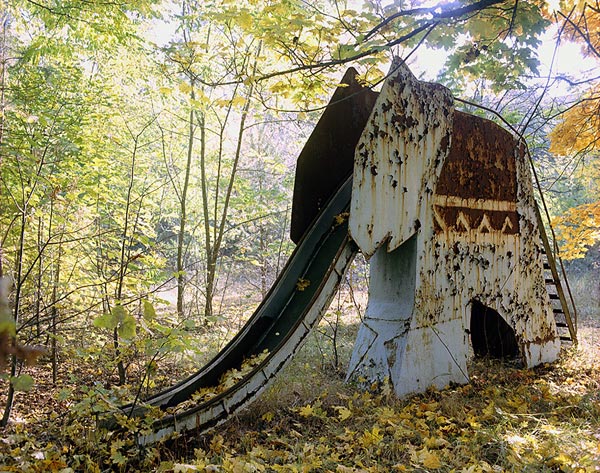
[2014]
Parole di Kenji Sawada / 沢田 研二
Musica di Ōyama Taiki /大山泰輝
Testo trovato su Japanese Protest Songs
Un’altra canzone sull’onda del grande disastro nucleare di Fukushima…
Parole di Kenji Sawada / 沢田 研二
Musica di Ōyama Taiki /大山泰輝
Testo trovato su Japanese Protest Songs
Un’altra canzone sull’onda del grande disastro nucleare di Fukushima…
昔、海辺の小さな寂れかけてた村に
(Continues)
(Continues)
Contributed by Bernart Bartleby 2015/5/26 - 10:11
Song Itineraries:
No Nukes
F.A.P.P. フクシマ・アトミック・パワー・プラント [Fukushima Atomic Power Plants]
![F.A.P.P. フクシマ・アトミック・パワー・プラント [Fukushima Atomic Power Plants]](img/upl/_dwn1432627408_1164601933.jpg)
[2012]
Parole di Kenji Sawada / 沢田 研二
Musica di Shibayama Kazuhiko /柴山和彦
Testo trovato su Japanese Protest Songs
Un’altra canzone sull’onda del grande disastro nucleare di Fukushima…
Parole di Kenji Sawada / 沢田 研二
Musica di Shibayama Kazuhiko /柴山和彦
Testo trovato su Japanese Protest Songs
Un’altra canzone sull’onda del grande disastro nucleare di Fukushima…
太陽と放射線、冷たいね
(Continues)
(Continues)
Contributed by Bernart Bartleby 2015/5/26 - 09:52
Song Itineraries:
Earthquakes, No Nukes
今こそ流れを変える時 (Now's the Time to Change)

[2013]
Nell’album intitolato “Imakoso” di questo musicista e attivista anti-nucleare nippo-coreano.
Testo trovato su Japanese Protest Songs
Un’altra canzone sull’onda del grande disastro nucleare di Fukushima…
Nell’album intitolato “Imakoso” di questo musicista e attivista anti-nucleare nippo-coreano.
Testo trovato su Japanese Protest Songs
Un’altra canzone sull’onda del grande disastro nucleare di Fukushima…
今逃げるのかよ どこへ行くのか
(Continues)
(Continues)
Contributed by Bernart Bartleby 2015/5/26 - 08:38
Song Itineraries:
No Nukes
傷痍軍人の歌 (Did The War Really End?)
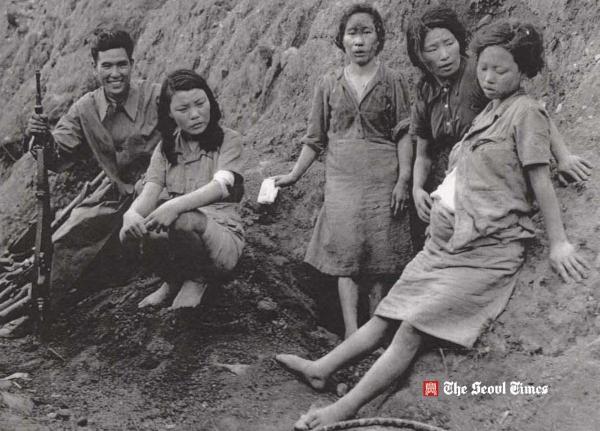
[1995]
Nell’album intitolato “Who Can Save The World?” di questo musicista e attivista anti-nucleare nippo-coreano.
Testo trovato su Japanese Protest Songs
Una canzone dedicata ad alcuni “effetti collaterali” della guerra, ai reduci mutilati ed invalidi e alle cosiddette “donne di conforto” (ianfu / 慰安婦), decine, forse centinaia, di migliaia di giovani cinesi e coreane (ma anche da Filippine, Burma, Tailandia, Vietnam, Malesia, Taiwan, Indonesia e Timor Est) che prima e durante la Seconda guerra mondiale vennero ridotte a schiave sessuali ad uso dell’esercito imperiale giapponese.
Nel ritornello del brano l’autore fa anche riferimento al “Matsushiro Daihon'ei Ato”, il quartier generale imperiale sotterraneo di Matsushiro, vicino a Nagano, un sistema di rifugi scavato nella montagna e destinato alla protezione dell’Imperatore e dei vertici dell’esercito. La sua costruzione iniziò tardivamente,... (Continues)
Nell’album intitolato “Who Can Save The World?” di questo musicista e attivista anti-nucleare nippo-coreano.
Testo trovato su Japanese Protest Songs
Una canzone dedicata ad alcuni “effetti collaterali” della guerra, ai reduci mutilati ed invalidi e alle cosiddette “donne di conforto” (ianfu / 慰安婦), decine, forse centinaia, di migliaia di giovani cinesi e coreane (ma anche da Filippine, Burma, Tailandia, Vietnam, Malesia, Taiwan, Indonesia e Timor Est) che prima e durante la Seconda guerra mondiale vennero ridotte a schiave sessuali ad uso dell’esercito imperiale giapponese.
Nel ritornello del brano l’autore fa anche riferimento al “Matsushiro Daihon'ei Ato”, il quartier generale imperiale sotterraneo di Matsushiro, vicino a Nagano, un sistema di rifugi scavato nella montagna e destinato alla protezione dell’Imperatore e dei vertici dell’esercito. La sua costruzione iniziò tardivamente,... (Continues)
子供のころのお祭りだった
(Continues)
(Continues)
Contributed by Bernart Bartleby 2015/5/25 - 15:43
Song Itineraries:
Violence on Women: just like and worse than war
1985
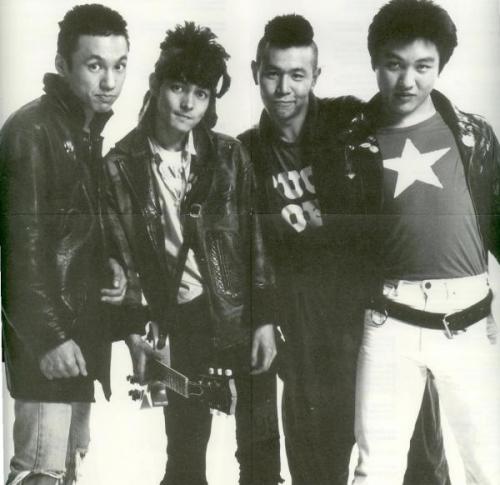
[1985]
Scritta da 甲本ヒロト / Hiroto Kōmoto.
Il primo singolo della punk rock band giapponese costituitasi proprio quell’anno.
Brano registrato dal vivo, durante un concerto alla fine del 1985, e mai incluso in alcun LP.
Una riflessione sull’olocausto nucleare a 40 anni da Hiroshima e Nagasaki.
Scritta da 甲本ヒロト / Hiroto Kōmoto.
Il primo singolo della punk rock band giapponese costituitasi proprio quell’anno.
Brano registrato dal vivo, durante un concerto alla fine del 1985, e mai incluso in alcun LP.
Una riflessione sull’olocausto nucleare a 40 anni da Hiroshima e Nagasaki.
1985 国籍不明の
(Continues)
(Continues)
Contributed by Bernart Bartleby 2015/5/25 - 13:53
Song Itineraries:
Hiroshima and Nagasaki 広島市 - 長崎市, No Nukes
×
![]()




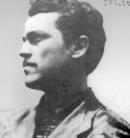

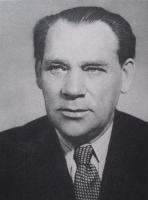

![Letters from Iwo Jima [ 硫黄島防衛の歌 ]](img/upl/aid-station-US-Marines-Iwo-Jima-1945.jpg)



